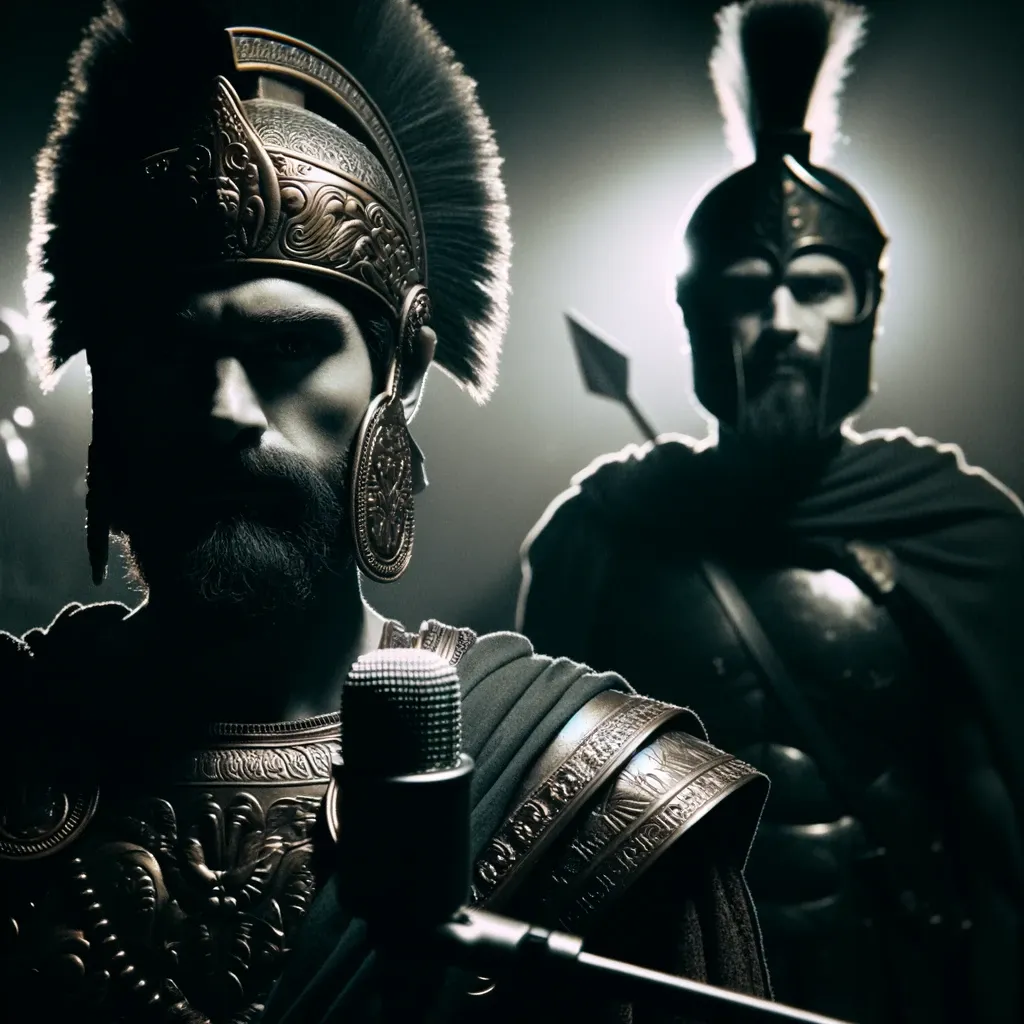Panegyric
Imagine standing shoulder-to-shoulder with three hundred brothers-in-arms, squeezed between two unforgiving cliffs and facing an overwhelming force of one million invaders.

Your King, a mere arm's length away, has commanded you to hold this ground. Together, bound by duty, resonating with ferocity in your hearts, you will fight and die to the last man.
Fast forward a century, and imagine yourself as a traveler wandering through the same hallowed ground. You are hiking through the now-peaceful and flowered terrain of Thermopylae, a place steeped in the legend of the long-past battle. As you navigate between the towering cliffs a tingling sensation stirs in your mind, you reflexively feel like someone is watching you. You look about, and your attention is caught by a solitary stone marker standing amidst the whispering grasses. You walk up to it, and look down to see these weather worn words:
Go tell the Spartans, stranger passing by, that here, obedient to their laws, we lie.
This commemoration is a panegyric. You recognize the style, these words were written by the famous lyrical poet, Simonides of Ceos.
A panegyric is a form of writing or public speech that originated in ancient Greece, characterized by its high praise or commendation for someone or something. Panegyrics played a significant role in Greek ceremonial practices, where orators would deliver these speeches to extol the virtues of public figures, heroes, or even the state itself. The art of crafting a panegyric involves not only flattery but also the skillful use of rhetoric, often weaving in historical references, moral lessons, and personal stories to effectively convey admiration and respect.
To gain more insights into its meaning, consider the word's etymology. It is a Greek word, where pan means all, and agyris means assembly or gathering. So a panegyric, describes something that is experienced by all of the members of a group.
Today, something like the ancient panegyric can be heard in introductions that are ritually performed before a lecture. An introduction in this context, is a pre-speech, typically delivered by someone other than the main speaker. This initial address shares the key objectives with its historical ancestor: it seeks to elevate the prestige and relevance of the upcoming speaker. This is achieved by drawing attention to their achievements and expertise. Moreover, by associating the speaker with other respected individuals or esteemed institutions, the introduction confers external validation; subtly convincing the audience that this person's contributions are valued by the broader community. Therefore, the introduction panegyric sets the expectation that the next speaker is worth listening to.
A modern, lyrically weaponized, and informal version of the panegyric comes to life in the rap battle. Stepping onto the stage, participants willingly face the potential of public humiliation, and in doing so, instantly make themselves interesting to the audience. Here, these brave combatants craft impromptu lyrical verses, set to music that is chosen by someone else, leaving them no room for rehearsal before their battle. To "fight", they boast about their greatness and simultaneously belittle their opponents. They do this as a lyrical debate, rich in rhythm and rhyme, akin to an on-the-fly panegyric, where each rapper extols their own virtues through skillful wordplay and sharp wit. The audience, playing a role reminiscent of the ancient agyris – becomes a pivotal participant in the ritual. It's through their reaction and judgment – expressed as shouts and claps, and cheers and jeers – that ultimately crowns the victor and humiliates the vanquished.
As you look around, you will see modern panegyrics everywhere. Take, for example, a Wikipedia page. For individuals of significant renown, these pages spontaneously emerge as collectively authored panegyrics. Ostensibly just an encyclopedia entry, a page can truly become a hidden battleground where public relations agencies, intelligence services, and self-organizing mobs go to war to shape what is written. Their goal is to control what defines someone's public persona and their externally validated prestige. Whether through truth or lies, these words influence how you and I, and the rest of the agyris perceive this person. This is the panegyric in its most essential form: propaganda.